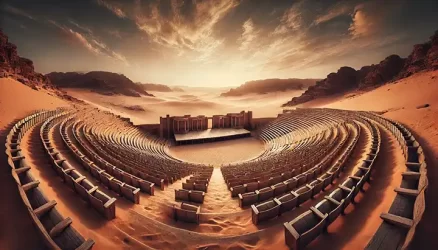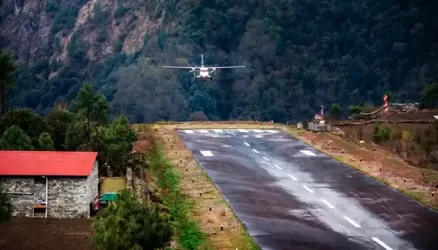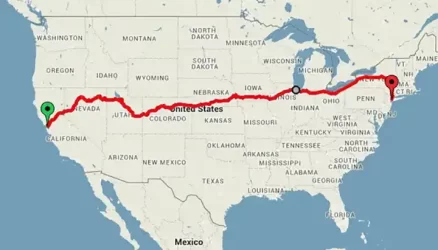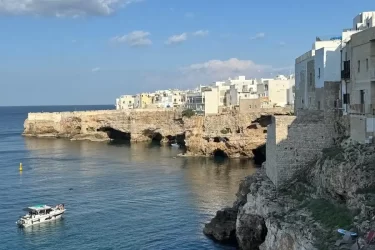Discover Peru – Top Tourist Attractions
Peru is a country rich in history, culture, natural beauty, and adventure, offering a wide range of travel options. One of the highlights of any journey to South America is visiting the historic Inca City of Machu Picchu, but Peru has much more to explore.
Take a cruise on the highest navigable lake in the world, gaze into one of the world’s deepest gorges, try your hand at sandboarding in the dunes, go on an Andean walk, or go piranha fishing in the Amazon. Other activities in Peru include discovering the secrets of the Nazca lines, touring historic sites in the Sacred Valley, and taking a stroll through Lima to get a feel for contemporary Peru.
Peru is one of the most distinctive travel destinations on the continent due to the variety of the terrain, the people, and the experiences. With our list of the top tourist destinations in Peru, you can choose the best locations to go.
#1 Machu Picchu

The spectacular Inca City of Machu Picchu is perched high on a ridge, 300 meters above the Urubamba River, and is one of the most striking sites for a deserted city anywhere in the world. The breathtaking backdrop of steep, luxuriant, and frequently covered mountains is almost as magnificent as the ruins themselves.
You can see why the Incas picked this location for their city when you’re standing close to the caretaker’s cottage and gazing out over Machu Picchu, the mountains covered in vegetation, and the river far below.
When Hiram Bingham discovered Machu Picchu in 1911, he continued to hold the view that it was the “Lost City of the Incas,” initially discovered by Spanish soldiers in the 1500s, up to the time of his passing. However, historians concur that Espritu Pampa, a ruin Bingham was aware of but dismissed as unimportant, was the actual lost city of the Incas.
The journey, whether it be by train or the Inca Trail, is an integral part of the experience of visiting Machu Picchu. It’s impossible to avoid being inspired by the surroundings in either situation. Trains depart for Aguas Calientes from Cusco, Ollantaytambo, or Urubamba.
You may take a bus up to Machu Picchu from Aguas Calientes, the town below Machu Picchu, after a 20-minute trip through a terrifying switchback road. It is possible to walk up this road to the site, although it is not advised because to the distance and steep ascent.
Machu Pichu has new admittance requirements starting in January 2020. You must enter the park at a specific time, tour with a guide, and adhere to a predetermined route.
The two months immediately before and after the main season, which runs from June to August, are also pleasant and can be nice times to travel when there are fewer tourists.
#2 The Inca Trail

Many people consider the famous Inca Trail, a four-day journey that leads to Machu Picchu, as the high point of their trip to Peru. The difficulty of this picturesque trail is frequently higher than what most people anticipate, but the rewards are greater.
The Inca Trail has a several potential starting sites, but the standard four-day journey starts at mile 82 of the Cusco-Aguas Calientes rail line. From here, the walk travels through breathtaking scenery and more than 30 Inca sites. The second day of the trip, which includes two high passes and an elevation rise of 1,200 meters, is the most challenging part of the trail.
Reservations must be made well in advance for the hike with an agency, especially during the busy months of June through August.
Some organizations provide a shortened hike that only includes the final two days or the final day of the hike. There are campsites scattered throughout the trek and one at Machu Picchu’s base.
Hikers can either carry their own backpacks or have them transported for them, depending on the type of tour they are taking. The daily limit for hikers and porters is rigorously adhered to.
#3 Lima

The Old Town of Lima is a UNESCO World Heritage Site. The city was established in the 1500s, and even though many of the original buildings were destroyed, it still has a great deal of historical significance and is a lovely area to stroll around.
The Plaza de Armas (Plaza Mayor), Lima’s central square and the center of the city’s historic area, is among the most enjoyable locations to visit. The terrible earthquake of 1746 led to the destruction of most of the buildings, which were then restored. The cathedral on the east side of the Plaza de Armas and the Government Palace (Palacio del Gobierno) on the north side are the area’s top attractions. The Casa del Oidor and the Archbishop’s Palace are also noteworthy.
Jiron de la Union, a pedestrian street off the square, is lined with stores, eateries, and the famed Iglesia de La Merced.
#4 Lake Titicaca

Lake Titicaca’s sparkling blue lake is encircled by undulating hills and traditional tiny communities. The lake region stands out from other parts of the nation due to its combination of stunning beauty and unique culture. Lake Titicaca is the highest navigable lake in the world, rising 3,820 meters above sea level.
The best way to appreciate the lake is to take a boat ride to the nearby villages and islands. The Uros Floating Islands (Islas Flotantes), which support small villages of Uros Indians, are one of the principal tourist attractions. Since the Inca era, these are artificial islands made of reeds that have supported a traditional way of life.
Although the sights you’ll see on tours of these islands are intended to attract tourists, they do give you a taste of a more traditional way of life. The floating islands make up a very minor portion of Lake Titicaca’s overall appeal; the real allure is found in the quaint towns tucked away in the hillsides that line the lake’s shoreline and on its two main islands, Isla Taquile and Isla Amantani.
The city of Puno, where lodging options, dining options, and travel services are located, is the main entry point to Lake Titicaca. The nearby city of Juliaca offers flights into and out of Puno as well as railroads, buses, and taxis.
#5 Cusco’s Architectural Treasures

Since Cusco is a UNESCO World Heritage Site, it is like roaming through a museum because history is layered on top of history. Many of the wonderful old colonial buildings bordering the narrow roadways were built atop Inca ruins, highlighting the city’s lengthy past.
The Cathedral and La Compania, two equally spectacular buildings, are located on the city’s principal square, Plaza de Armas. In the daytime, the square is an excellent area to grab lunch, start a walking tour, and people watch.
Even though Cusco is home to a huge number of interesting structures and museums, one of the city’s top sights is the Cathedral of Santo Domingo, which is built atop the remains of the Inca city of Coricancha.
#6 The Sacred Valley

The picturesque Sacred Valley and the cities of Pisac, Urubamba, and Ollantaytambo are only a short drive north of Cusco. In addition to being a tranquil place to spend some time browsing markets or learning about the local culture, this rich valley is home to numerous Inca ruins that are worth exploring.
The Pisac Ruins, the Sunday Market in Pisac (minor market days are conducted on Tuesdays and Thursdays), and the ruins and fortress at the charming little town of Ollantaytambo are the valley’s main attractions. The village of Moray, which has circular terracing used as an agricultural trial ground by the Incas, is a little out of the way but well worth the trek, as are the salt mines at Salinas, which have been in use since the time of the Incas.
#7 Nazca Lines

The enigmatic Nazca lines are an extraordinary sight that will astound you. Before pilots passing over the area in the 1920s noticed the lines from the air and understood they created distinct patterns and images, these enormous images on the desert floor were virtually unknown.
The hillside carvings near Nazca and Paracas, which are visible from the ground, had some recognition before that. However, the enormous paintings on the flat desert floor are so massive that they can only be seen from an aerial perspective.
Seventy various plant and animal designs, hundreds of lines, and other geometrical shapes can all be seen from the air. These lines are dispersed throughout hundreds of square kilometers, with some of them reaching lengths of up to ten kilometers. The figurines feature a 180-meter-long lizard, a condor with a 130-meter wingspan, as well as a number of others, including a monkey, hummingbird, killer whale, and spider.
#8 Puerto Maldonado and the Amazon

A major starting point for trips of the Amazon, Puerto Maldonado is only a half-hour flight from Cusco. With a hot, humid forest and the potential to observe several rare animals, this is a very different experience from what you will find in other regions of Peru. You can anticipate seeing piranhas, caimans, capybaras, monkeys, parrots, and turtles in this region of the country.
The two main attractions are the Reserva Nacional Tambopata and the Parque Nacional Bahuaja Sonene, both of which are well-served by a variety of jungle lodges. It takes a boat around an hour to get to the Reserva Nacional Tambopata jungle lodges from Puerto Maldonado. It takes around four hours to travel by boat from the Parque Nacional Madidi in Bolivia to the Parque Nacional Bahuaja Sonene. The length of tours normally ranges from a few days to a weeklong experience.
Accommodation in Puerto Maldonado
#9 Arequipa’s Historical City Center

At almost 2,300 meters, Arequipa is frequently referred to be Peru’s most stunning city. The city core is a UNESCO World Heritage Site and is surrounded by snow-capped mountains. Old buildings in Arequipa made of sillar stone, a volcanic rock that glows brightly in the sunlight, are the city’s main source of fame. The majority of the colonial structures in the old city center are constructed from this stone, earning it the moniker “white city.”
People who want to explore the Colca Canyon (Caon del Colca), which is roughly a four-hour journey from the city, frequently make Arequipa their first stop.
#10 Colca Canyon (Cañon del Colca)

Colca Canyon (Caon del Colca), twice as deep as the Grand Canyon, is the second-deepest canyon in the world after the close-by Cotahuasi Canyon, despite having previously been regarded to be the deepest. The canyon, which is the result of a seismic fault between two volcanoes, is 3,400 meters deep. A flowing river runs far below at the base.
The Collagua, Cabana, and ultimately the Inca peoples lived in the Colca Canyon region for thousands of years. The canyon walls’ stone terracing, which dates to AD 800, is still in use today.
From Arequipa, the canyon is roughly a four-hour drive away. There are day trips accessible from Arequipa to the canyon, however two or more days are advised given the distance to travel to reach the canyon. There are hot springs, chapels, villages, and Inca ruins to explore in addition to staring out at the canyon. As they soar past the canyon walls, condors at Colca Canyon are also a major draw.
#11 Ica and the Sand Dunes at Huacachina

The oasis resort of Huacachina on the outskirts of Ica has the solution for the athletic type wishing to try something a little unique. This picture-perfect, palm-lined resort community is located just west of Ica and is built around a lagoon that is encircled by enormous sand dunes, some of which reach heights of 1,000 meters.
People visit this location to try out sandboarding. Sandboarding, which is similar to snowboarding, includes riding down sand dunes on specialized sand-boards that may be leased nearby. Dune buggies are another fantastic option to get outside and take in the scenery for those who are less coordinated.
Due to its slight elevation above the sea, Ica does not get the typical coastal mist that other cities along this stretch do. The town is pleasant to visit at any time of year thanks to its consistently sunny and dry weather.
#12 Barranco

Just south of Central Lima and Miraflores is the lovely Barranco neighborhood, a hillside location that is conveniently close to the city’s center. The neighborhood has a pace that is much slower than the metropolis, with unassuming colorful colonial architecture lining the tiny streets and hillside seaside views.
Because poets and artists have long been drawn to the area, it has a bohemian vibe. This area is wonderful for afternoon strolls or dining, especially around sunset at one of the oceanfront eateries. Barranco’s Puente de Los Suspiros is the sole major tourist destination aside from the atmosphere (Bridge of Sighs).


















